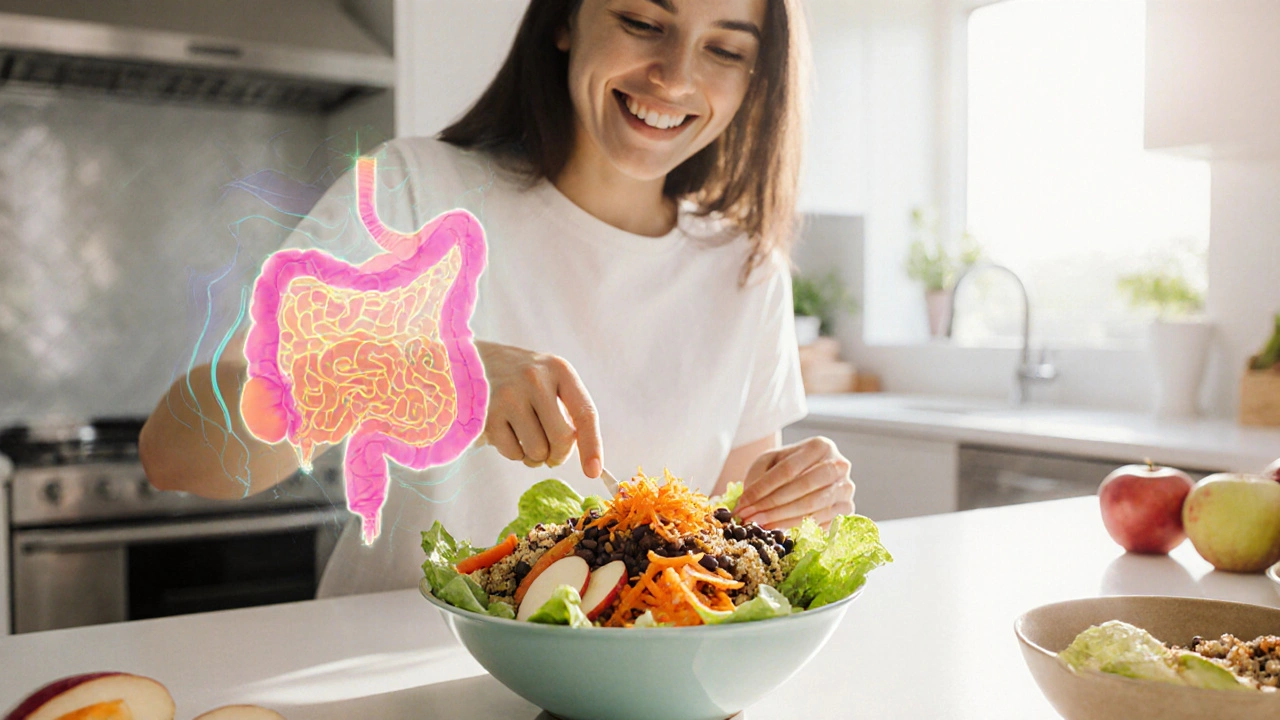Fiber: Everything You Need to Know
When working with fiber, a plant‑based carbohydrate your body can't digest but that fuels your gut bacteria. Also known as dietary fiber, it fiber plays a key role in digestion, blood sugar control, and heart health. Soluble fiber, the type that dissolves in water and forms a gel‑like substance helps lower cholesterol, while insoluble fiber, the roughage that adds bulk to stool keeps bowel movements regular. Together, these fibers shape the gut microbiome, the community of microbes living in your intestines, turning otherwise wasted plant matter into short‑chain fatty acids that protect the lining of your colon.
Understanding the two main types makes it easier to pick the right foods. Soluble fiber is found in oats, beans, apples, and psyllium. Because it slows digestion, it smooths the rise of blood glucose after meals and can shave a few points off LDL cholesterol. Think of it as a natural traffic controller for sugar and fats in your bloodstream. Meanwhile, insoluble fiber shows up in whole‑grain breads, nuts, and vegetable skins. Its main job is to add bulk, speed up waste passage, and prevent constipation. If you’ve ever felt bloated after a low‑fiber diet, that’s the gut telling you it misses the roughage that keeps things moving.
Both fiber types feed the gut microbiome. The microbes ferment soluble fiber into short‑chain fatty acids like butyrate, which reduce inflammation and strengthen the gut barrier. That link explains why higher fiber diets are linked to lower rates of colon cancer and better immune responses. In addition, many of these fermentable fibers act as prebiotics, food for beneficial gut bacteria. When you eat foods rich in prebiotic fibers—think garlic, onions, and bananas—you’re essentially giving the good bacteria a boost, which in turn supports digestion, mood, and even skin health.
Practical Ways to Up Your Fiber Game
Adding fiber doesn’t require a complete diet overhaul. Start by swapping refined grains for whole‑grain versions, like brown rice or whole‑wheat pasta. Toss a handful of beans into soups or salads for a soluble boost. Keep the skins on fruits and vegetables whenever possible, and snack on nuts or seeds instead of chips. If you find it hard to meet the 25‑30 g daily goal, a fiber supplement such as psyllium husk can fill the gap, but aim to get most of your intake from foods so you also reap the prebiotic benefits.
Below you’ll find a curated list of articles that dive deeper into specific health topics, medication comparisons, and lifestyle tips—all connected by the shared theme of supporting your body’s natural processes. Whether you’re looking for detailed guidance on skin health, heart‑friendly diets, or managing chronic conditions, the resources ahead will give you clear, actionable information to make smarter choices.

How Fiber Prevents Poor Food Absorption
- Date: 27 Sep 2025
- Categories:
- Author: David Griffiths
Explore how dietary fiber supports digestion, boosts gut microbiota, and stops bad nutrient absorption. Practical tips and a clear soluble‑vs‑insoluble comparison included.



